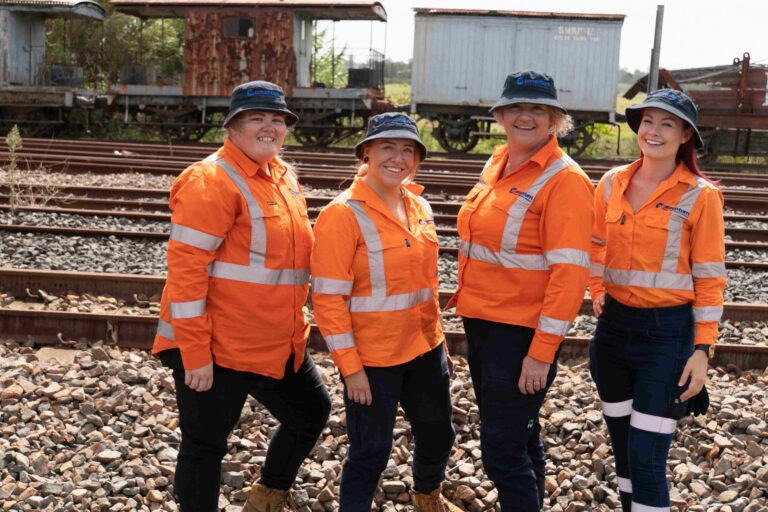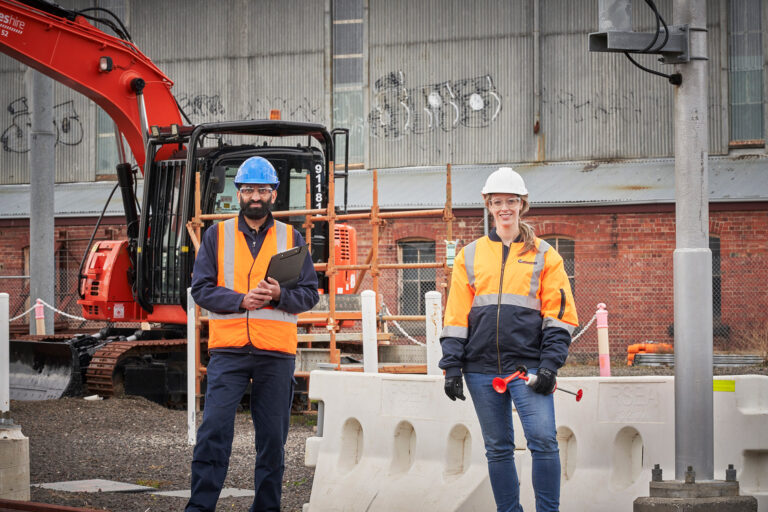How to Become a Train Driver in Victoria
Are you looking for a rewarding career? If you think you have what it takes to get in the driver’s seat for the Victorian network and are looking for a rewarding career in rail, read on for our guide on how to become a train driver in Melbourne, Victoria (VIC), where we detail the necessary qualifications, train driver training and different career opportunities that await you on the tracks.
Trains are at the heart of the Victorian transport network, from travelling at 160 kph across the fast rail V/Line regional network to the Metro City Underground Loop or crossing the state border with Pacific National or SCT. The Victorian network features more than 4,000 kilometres of tracks, including 1,700 kilometres of passenger rail routes.
Train drivers are critical in guiding these trains between platforms and ensuring the safe delivery of passengers, colleagues and freight locally and for export.
What it’s like to be a train driver in Victoria?
Before committing to becoming a train driver in Victoria, it’s important to understand the job completely. While train driving is incredibly rewarding, it can often call for early starts, long hours of shift work and of course, plenty of travel.
Some of the key roles carried out by train drivers in Victoria are:
- Train and Locomotive Preparation
- Operating trains at their designated train speed while adhering to timetables
- Observing signals, safe working rules and procedures, analysing track conditions and reporting faults
- Responding to emergencies
- Stopping at stations to pick up/drop off passengers
- Shunting wagons for freight operations
How to become a train driver in Melbourne, VIC?
Safety is a top priority within the Australian train network, and Victoria is no exception. If you plan to pursue your career as a Victorian locomotive driver, you’ll need to undertake a Rail Category 1 medical examination, pass the academic testing process, complete the necessary skills training, and then meet the competency standards demanded by the industry.
Looking to specialise or have a keen interest? Consider upgrading with specialised courses that certify you to work as a Steam Train Driver within the Heritage groups.
Train Driver Course Melbourne
To qualify as a train operator, whether passenger trains or freight, electric or diesel, you must be engaged in the rail industry by a rail operator such as Pacific National, Aurizon, SCT, Metro Trains, or V-Line or enter via a program such as Street-to-Seat.
Rail operators recruit and sign drivers up for a Traineeship where they can attain Certificate IV in Train Driving in Victoria. The process works similarly to an apprenticeship. Once you complete your train driving training and gain qualification, you continue working for the rail operator.
Street-to-Seat is an education-to-employment Rail Career Path Program initiative hosted by Momentum Rail (an industry skills supplier). Street-to-Seat is the rail industry’s most recognised training-to-employment driver program, supporting rail operators to develop new Train Drivers and Train Drivers’ Assistants. As part of the Momentum Rail recruitment process, you must complete a training program to gain the required qualifications to access Rail Operator worksites safely. Once qualified, you could progress to employment with Momentum Rail and other rail industry employers.
You must respond to the recruitment strategies of the various rail companies recruiting trainee drivers and other rail-based callings. There are no shortcuts in the rail sector. The industry is safety-critical, and all drivers must be trained on a live network under supervision before becoming certified to operate.
Start your train driving career with CERT Training
Seeking out accredited training providers that provide train driver training is one of the most important steps when researching how to become a train driver. Founded in 2003, CERT Training delivers the highest quality, flexible, industry-leading, cost-effective training solutions to the Australian Rail Industry, including Victorian networks such as V/Line.
CERT Training also works closely with Momentum Rail to support the training and development required for students undertaking the Street-to-Seat Train Driver or Train Driver’s Assistant Career Path Programs.
The pathway to becoming a train driver is as rewarding as it is exciting. One of the best ways to get your start is to attain qualifications that enable you to learn from the experts in the industry and gain a thorough understanding of how the rail network operates.
Whilst train driver courses are only offered to trainees already engaged with an industry operator, our Train Track Safety Awareness (TTSA) course, also known as TLIF 2080 Safely Access the Rail Corridor (SARC), can help lay the groundwork for a standout resume application during the next Train Driver Graduate Program offered by the industry operators or the Career Path Program recruitment by Momentum Rail.
If you can’t find a program for trainee locomotive drivers with a rail operator near you, there are other ways to get your start in this essential, well-funded and historic industry. Training to become a Handsignaller, becoming a Track Force Protection Coordinator and working as a Track Vehicle Operator can assist you in understanding the industry and are themselves great roles to get your start in an amazing and rewarding career. These roles can ultimately assist you in meeting the standards and requirements to end up driving trains across the awesome Victorian landscape.
Ready to take the next step?
If you’re looking for a rewarding and varied career with an excellent salary, you’ve found it in the rail industry.
Express your interest in the Street to Seat program here.
Please contact the friendly team at CERT Training VIC to learn more about the flexible, innovative, cost-effective solutions designed to help you enter the Victoria rail corridor.
Enrol in CERT Training now and kick start your career as a train driver in Australia.
To stay updated about rail industry practices, key safety information and best practices, follow us on Facebook and LinkedIn.

10 Reasons Your Manager Should Pay for Your Upskill Training in Rail
If you are planning a career in the rail industry or already serving in a role with potential for growth, it’s beneficial to upskill and even better if your manager will pay for it.

Licences for High-Risk Jobs for Rail Workers in Western Australia
For anyone looking to start their career in construction or take it to the next level in Western Australia (WA), there is one crucial…

Where can I find rail jobs around Australia?
Australia is criss-crossed by railways that offer a key service to industry and the public. Freight rail covers the nation and links states, regions…
